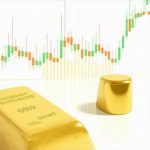Understanding Gold Trading Techniques for Maximum Profit
Investing in gold is a time-honored method of securing wealth and hedging against market volatility. With fluctuating prices and ongoing economic uncertainties, mastering effective gold trading techniques is essential for maximizing your profits today. In this article, we will explore various strategies and tips that can help both new and seasoned investors navigate the gold market successfully.
What Are the Most Effective Gold Trading Techniques?
To maximize profits in gold trading, investors must be aware of several key techniques:
- Technical Analysis: This involves studying historical price charts and identifying patterns to predict future movements. Investors can use various indicators such as moving averages, RSI, and MACD to make informed decisions.
- Fundamental Analysis: Understanding the factors that influence gold prices is crucial. This includes economic indicators, central bank policies, and geopolitical events. For example, when central banks increase their gold reserves, it can signal a bullish trend for gold prices.
- Diversification: Don’t put all your eggs in one basket. Spread your investments across different gold products, such as bullion, coins, and ETFs, to mitigate risks and enhance potential returns.
- Timing the Market: Like any other commodity, timing plays a pivotal role in gold trading. Investors should keep an eye on market trends and economic news that could influence gold prices. For instance, during times of economic uncertainty, gold often sees a surge in demand.
- Utilizing Leverage: Some traders use leverage to enhance their buying power. While this can amplify profits, it also increases risk. It’s important to understand how leverage works and to use it cautiously.
By implementing these strategies, you can increase your chances of maximizing profits in gold trading.
How Can I Stay Informed About Gold Market Trends?
Staying updated on current trends is vital for any investor. Regularly following reputable financial news outlets and resources like Kitco can provide insights into market movements and expert opinions on future trends. Engaging with online trading communities can also offer valuable tips and strategies from experienced traders.
Remember, the world of gold trading can be volatile, and having a solid strategy in place can make a significant difference in your investment outcomes. If you have any questions or want to share your experiences with gold trading techniques, feel free to leave a comment below!
Leveraging Market Indicators for Strategic Gold Trading
Understanding market indicators is crucial for gold traders looking to maximize their returns. Key indicators such as the gold price trends and the performance of the U.S. dollar can significantly impact gold prices. As the dollar strengthens, gold prices often decline, making it essential for traders to monitor these fluctuations closely.
How Do Economic Factors Influence Gold Trading?
Various economic factors can affect gold trading in profound ways:
- Inflation Rates: Gold is traditionally seen as a hedge against inflation. When inflation rises, investors flock to gold, driving prices up. Keeping an eye on inflation data can aid in predicting price movements.
- Interest Rates: Lower interest rates tend to boost gold prices as they reduce the opportunity cost of holding non-yielding assets. Conversely, higher rates can lead to decreased gold demand.
- Geopolitical Events: Uncertainty in political climates often leads to increased gold purchases. Events such as elections, trade wars, or conflicts can create volatility in the markets, prompting investors to seek the safety of gold.
By understanding these economic influences, traders can better time their entries and exits in the market.
What Role Does Sentiment Play in Gold Trading?
Market sentiment can significantly sway gold prices. Tools such as sentiment analysis can help traders gauge the mood of the market, adjusting their strategies accordingly. For instance, during periods of heightened uncertainty, a bullish sentiment towards gold may emerge, leading to increased buying pressure.
Additionally, the Wikipedia page on gold provides a comprehensive overview of historical trends and factors that have influenced gold’s value over time, aiding traders in developing informed strategies.
Moreover, joining trading communities and forums can provide insights into prevailing market sentiments and trading strategies from seasoned investors. This collaborative approach can enhance your trading acumen and lead to more profitable outcomes.
Best Practices for Gold Trading Success
To maximize profitability in gold trading, consider these best practices:
- Continuous Learning: The world of gold trading is always evolving. Stay updated with the latest market news and educational resources to refine your strategies.
- Risk Management: Establish clear risk management protocols to protect your investments. Techniques like stop-loss orders can help mitigate potential losses.
- Regular Reviews: Periodically review your trading performance to identify successful strategies and areas for improvement. This reflective practice can lead to better decision-making over time.
By implementing these best practices, you can build a robust trading strategy that adapts to market changes and maximizes your profits.
If you have any tips or experiences to share about gold trading, feel free to leave a comment below! For further reading, you might want to check out our article on current trends in gold market analysis.
Implementing Advanced Strategies in Gold Trading
To further enhance your gold trading success, consider incorporating advanced strategies that leverage market dynamics and technological tools. These methods can help you refine your trading approach and boost profitability in a competitive environment.
What Are the Key Advanced Strategies for Successful Gold Trading?
Advanced traders often utilize a variety of techniques that go beyond basic trading principles:
- Algorithmic Trading: This involves using computer algorithms to automate trading strategies based on predefined criteria. Algorithmic trading can enhance speed and precision, allowing traders to capitalize on market fluctuations more effectively.
- Hedging Techniques: To mitigate risks, traders can employ hedging strategies, such as options contracts or futures. These instruments can protect against adverse price movements, ensuring more stable returns.
- Using Technical Indicators: Beyond basic indicators, advanced traders often employ complex technical analysis tools like Fibonacci retracement, Bollinger Bands, and stochastic oscillators to predict price movements and identify optimal entry and exit points.
- Market Sentiment Analysis: Utilizing tools that assess market sentiment can provide insights into the overall mood of investors. This can help in making informed decisions, particularly during volatile market conditions.
By integrating these advanced strategies, traders can improve their adaptability in changing market conditions and enhance their overall performance.
How Can I Utilize Economic Reports for Better Gold Trading Decisions?
Economic reports play a pivotal role in influencing gold prices. Reports such as the Consumer Price Index (CPI) and the Producer Price Index (PPI) can provide valuable insights into inflation trends. When inflation rises, demand for gold typically increases as investors seek a hedge against currency devaluation. Regularly reviewing these reports can significantly inform your trading strategies.
According to the U.S. Bureau of Labor Statistics, the CPI is a key indicator of inflation and can directly impact gold prices. Understanding these relationships allows traders to position themselves advantageously in the market.
In addition to inflation data, keeping an eye on employment figures, GDP growth rates, and central bank announcements can provide further context for making informed trading decisions.
Building a Sustainable Gold Trading Strategy
For lasting success in gold trading, it is essential to build a sustainable trading strategy that incorporates continuous learning and adaptation. Here are some best practices to consider:
- Establish Clear Goals: Define your trading objectives, whether they are short-term gains or long-term investments. Having clear goals will guide your trading decisions and strategies.
- Stay Informed: Regularly consume financial news and analysis from trusted sources like Reuters. This will keep you updated on market trends and events that could affect gold prices.
- Develop a Risk Management Plan: Determine how much capital you are willing to risk on each trade. Implement tools like stop-loss orders to protect your investments from significant losses.
By following these best practices, you can create a robust framework for your gold trading activities, promoting both profitability and sustainability.
If you found these strategies helpful or have your own tips to share, please leave a comment below! For more insights on gold trading, check out our article on key trends in gold price analysis.
Enhancing Your Gold Trading Skills with Expert Insights
As you delve deeper into the world of gold trading, it becomes imperative to enhance your skills through expert insights and advanced strategies. The gold market is dynamic, influenced by various economic indicators, geopolitical events, and market sentiments. By equipping yourself with knowledge and practical techniques, you can position yourself for greater success in your trading endeavors.
What Are the Best Resources for Learning About Gold Trading?
To develop a comprehensive understanding of gold trading, consider leveraging various resources:
- Online Courses: Websites like Coursera and Udemy offer courses specifically focused on trading strategies, including gold trading. These courses can provide you with structured learning and expert guidance.
- Trading Books: Numerous books on trading psychology and strategies exist, such as “A Beginner’s Guide to Gold Trading” by John Doe, which outlines essential principles for newcomers.
- Podcasts and Webinars: Engaging with podcasts like “The Gold Trading Podcast” or attending webinars from financial experts can keep you updated on market trends and strategies.
Utilizing these resources can significantly enhance your knowledge base and trading acumen, allowing you to make informed decisions in the gold market.
Understanding the Role of Gold as a Safe-Haven Asset
Gold has long been regarded as a safe-haven asset, particularly during periods of economic uncertainty. Understanding this role can help inform your trading decisions. When the stock market is volatile, or inflation is high, investors often flock to gold, driving its prices up. According to the World Gold Council, gold typically performs well in such conditions, making it a reliable hedge against market fluctuations.
How Can I Analyze Gold Price Trends Effectively?
Analyzing gold price trends involves several effective methods:
- Chart Analysis: Utilize charting tools to observe historical price movements and identify potential patterns. Look for trends that could indicate future price fluctuations.
- News Monitoring: Follow financial news from reputable sources like Bloomberg to stay informed about global events that could impact gold prices.
- Technical Indicators: Employ technical indicators such as the Relative Strength Index (RSI) and moving averages to assess market conditions and make informed trading decisions.
By applying these analytical techniques, you can enhance your ability to predict price movements and time your trades effectively.
Engaging with the Gold Trading Community
Networking with fellow traders can provide valuable insights and shared experiences. Participating in online forums or local trading groups can expose you to diverse strategies and perspectives. Platforms like Reddit’s r/Gold or dedicated trading communities can be excellent places to exchange ideas and learn from others’ successes and challenges.
In conclusion, enhancing your gold trading skills involves continuous learning, utilizing expert resources, and engaging with the trading community. As you implement these strategies, remember to stay adaptable and open to new ideas. If you have any tips or experiences to share about your gold trading journey, feel free to leave a comment below! For further exploration of gold trading strategies, check out our article on the ultimate guide to investing in gold.
Frequently Asked Questions (FAQ)
What are the best strategies for trading gold?
Some of the best strategies for trading gold include technical analysis, fundamental analysis, diversification, and timing the market. Utilizing these methods helps traders make informed decisions and maximize their profits.
How can I learn more about gold trading?
To learn more about gold trading, consider taking online courses, reading trading books, and following financial news from reputable sources. Engaging with trading communities can also provide valuable insights and shared experiences.
What economic factors should I monitor for gold trading?
Key economic factors to monitor include inflation rates, interest rates, and geopolitical events. These factors can significantly influence gold prices and trading strategies.
Is gold a good investment during economic downturns?
Yes, gold is often considered a safe-haven asset during economic downturns. Investors tend to flock to gold during times of uncertainty, leading to increased demand and higher prices.
How can I effectively analyze gold price trends?
Effectively analyzing gold price trends involves using chart analysis, monitoring news, and employing technical indicators. These techniques help traders predict price movements and make informed trading decisions.
What role does market sentiment play in gold trading?
Market sentiment can significantly impact gold prices. Understanding the mood of the market allows traders to adjust their strategies based on prevailing attitudes towards gold.
How do I manage risks in gold trading?
Effective risk management in gold trading involves setting clear risk parameters, using stop-loss orders, and regularly reviewing your trading performance to identify successful strategies.
Are gold ETFs a better option than physical gold?
Gold ETFs offer easy liquidity and diversification compared to physical gold. However, the choice depends on individual investment goals and preferences, as both options have their advantages.
What are the tax implications of trading gold?
The tax implications of trading gold vary by country and type of investment. Generally, profits from gold trading may be subject to capital gains tax, so it’s essential to consult a tax professional for guidance.
Authoritative Sources
The following sources provide valuable information and insights relevant to gold trading:
World Gold Council: A leading organization that provides authoritative data and analysis on gold trends, demand, and investment opportunities.
Investopedia: A trusted resource for financial education, offering articles and tutorials on gold trading and investment strategies.
Reuters: A reliable news outlet that covers financial markets, including updates on gold prices and economic factors that influence them.
Bloomberg: A prominent financial news platform providing analysis and insights on gold trading and market trends.
Kitco: A well-known resource for real-time gold prices, market analysis, and news, helping investors stay informed about the gold market.
Conclusion
In conclusion, mastering gold trading requires a combination of effective strategies, continuous learning, and market awareness. By understanding the various factors that influence gold prices and employing best practices, you can maximize your success in this dynamic market. Remember, gold remains a reliable investment, especially during times of economic uncertainty. Stay informed, adapt your strategies, and engage with the trading community. If you found this article helpful or have additional tips to share, please leave a comment below! For further exploration of gold trading strategies, check out our article on the ultimate guide to investing in gold.










I’ve found that mastering technical analysis is crucial when trading gold, especially using indicators like RSI and moving averages to recognize price trends. But what often surprises me is how fundamental factors like central bank policies can swiftly change market dynamics, making it important to stay updated with economic news. Diversification is another point I resonate with — holding a mix of bullion, coins, and ETFs has helped me manage risk effectively. However, timing the market is still a challenge, particularly identifying when economic uncertainty triggers a surge in gold demand. I’m curious how others balance timing with risk, especially when considering leverage, which can amplify profits but also risks. Has anyone developed a personal approach to assessing the best leverage levels while safeguarding their capital? Also, which resources have been most reliable for you to keep informed about geopolitical events impacting gold prices? Sharing experiences could greatly help all of us refine our strategies in this volatile market.